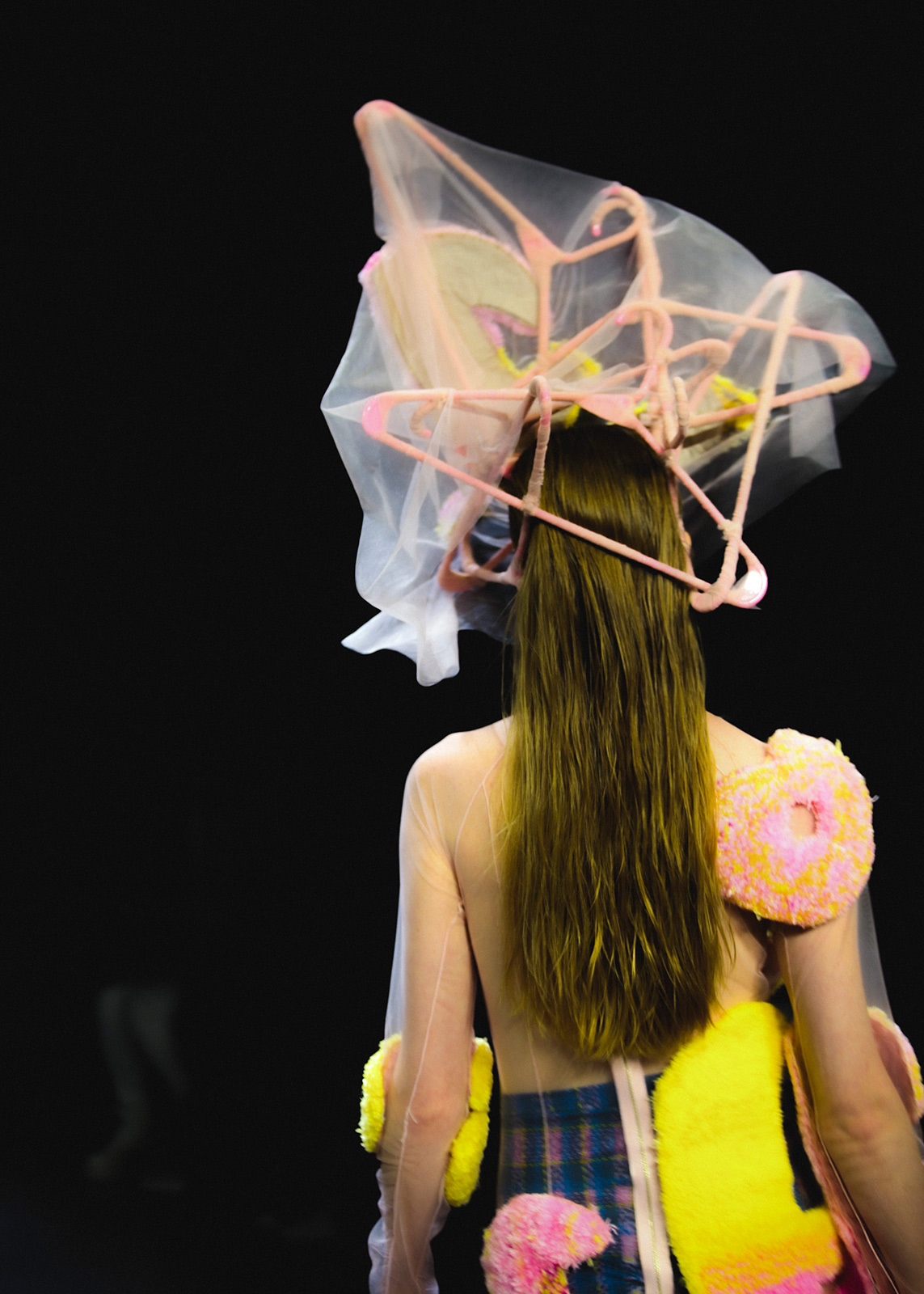Document spoke to three Parsons MFA graduates backstage about their disparate influences, from traditional Russian craft to 1940s New York.
Parson’s MFA Program in Fashion Design and Society is known for grooming the next generation of progressive and innovative designers. The twelve collections presented by this year’s MFA candidates yesterday morning at Spring Studios proved that this class is certainly no exception. Introspection was a common thread throughout all of the designer’s processes—looking inward for inspiration in lieu of external sources. The close proximity to their inspiration, many focusing on the ideas of family, heritage, and childhood, provided a distinctive depth to the work. There was a sense of delicacy and deconstruction to the clothing found in intricate embroidery techniques, loose threads, and unexpected silhouettes. The tactile nature and detailed craft in the work was a welcomed move away from our current the rapid pace of life and production.
Parsons is a leader in educating its students in sustainability, and materiality played a huge part in almost all of the collections, with the designers finding innovative ways to update practices such as weaving and crochet through the use of experimental and upcycled materials. Document spoke with three Parsons MFA candidates on the processes behind their individual collections.
I noticed your collection incorporates a lot of weaving, is there a specific reason as to why?
I wanted my collection to represent me and my life, so it’s a contemporary expression of my life living. I wanted to explore that through fabrications, and weaving just became one of my means of working. So I looked at, for example, my school uniform when I was 15, which I used to vandalize when I was a kid because I was a naughty girl. I used to rip it up and stick safety pins in it. So I just started to recreate that uniform with elastic. I literally replicated my school uniforms colors, squares, and I even used the safety pins, but I used them as a cuff detail instead of stitching it back together. I’m a dancer as well as a designer, so movement and flexibility are important to me. That’s why I chose to weave with elastic, and not something like wool, or something that has no stress.
Is there any other material or technique you are infatuated with that you’d like to work with next?
I’m quite proud of my safety pin crochet. That became like a whole world in itself, and it became my joining mechanism. I barely used a sewing machine throughout my whole collection. It’s all handcrafted; I safety pin crochet, and I connect things with the safety pins. I ended up using it as the straps on my bags, it’s the cuffs on the garments, it’s the ribs of the hat, and that literally comes from when I was like 14-years-old. It just springboarded into all these different ideas.
Natalie Vladimiroff
A lot of your pieces are very free form and have unique, unclassic silhouettes. How do you balance fashion as function and fashion as art?
Actually my starting point was with traditional garments. So like a skirt and a shirt, or a tracksuit or a suit, or a slip dress or a shirt dress, because my concept is based on the idea of bringing together two different things. Because of this, my silhouettes got kind of messed up and twisted and crushed, and that gave a more abstract feeling.
What kind of things were you trying to bring together?
My collection is about looking at my family heirlooms like photographs and looking at embroideries from when I was a child, which go back to generations ago. I am also addressing that I have a connection to my family through a history of handcraft. My mom is a dressmaker, my grandma is a machine embroiderist, but then also my family is Russian, and I grew up in Australia. There is sort of this disconnect between how I relate to them but a connection through the handcraft we all share. So my focus became about juxtaposing the valuable and the un-valuable, and the precious and non-precious as a visual representation of two things which relate to each other but don’t at the same time.
Why did you chose 1948 for your collection?
Last summer, after my grandfather passed away, I found all of these letters in Long Island, which would be my family home here in New York every summer. I grew up in Oregon, so I would always stay with my grandparents when we came over here. I found these letters, which we never knew existed, in the basement, right after my grandfather died, and I read them out to my grandmother, and it was very reminiscent of how we’d always sit around every summer and exchange stories, which was extremely important in my life. Also, I always romanticized New York through my grandparent’s eyes, so my interaction with New York is always through these two 95-year-old’s eyes. My collection is unpacking all of these letters, and each look is like a scene from each individual letter.
Would you say your silhouettes were inspired by the fashion of the late 1940’s?
My silhouettes are inspired by my grandmother’s wedding suit, which she had made in Manhattan, and I actually have my grandfather’s wedding outfit as well. I literally made a hybrid, and I used that as my foundation because there are so many colors and prints happening. So I used the silhouette to montage both of their identities and see how much of him or her is present in the letter.

















